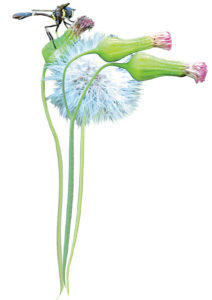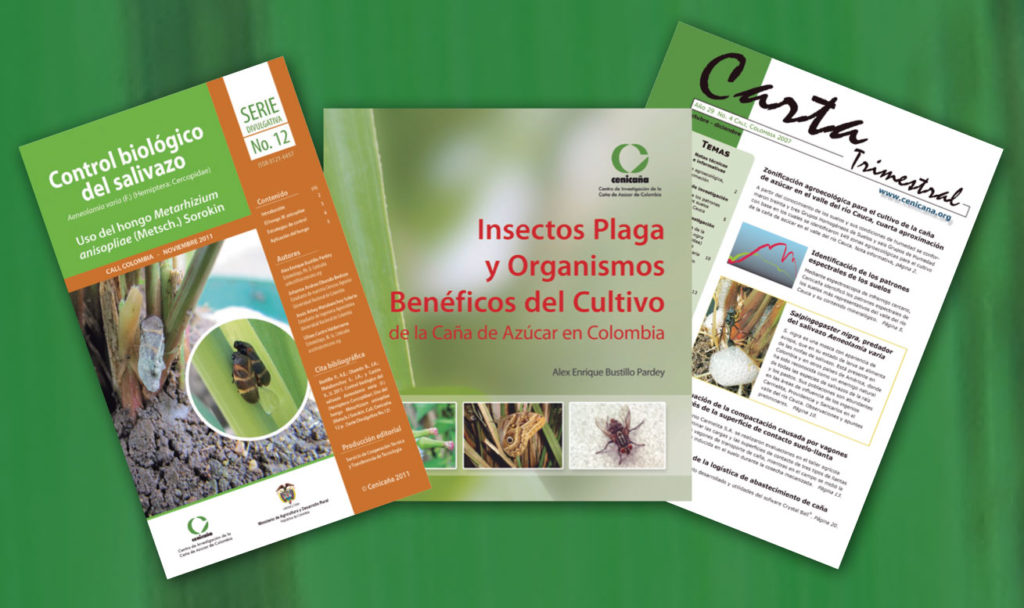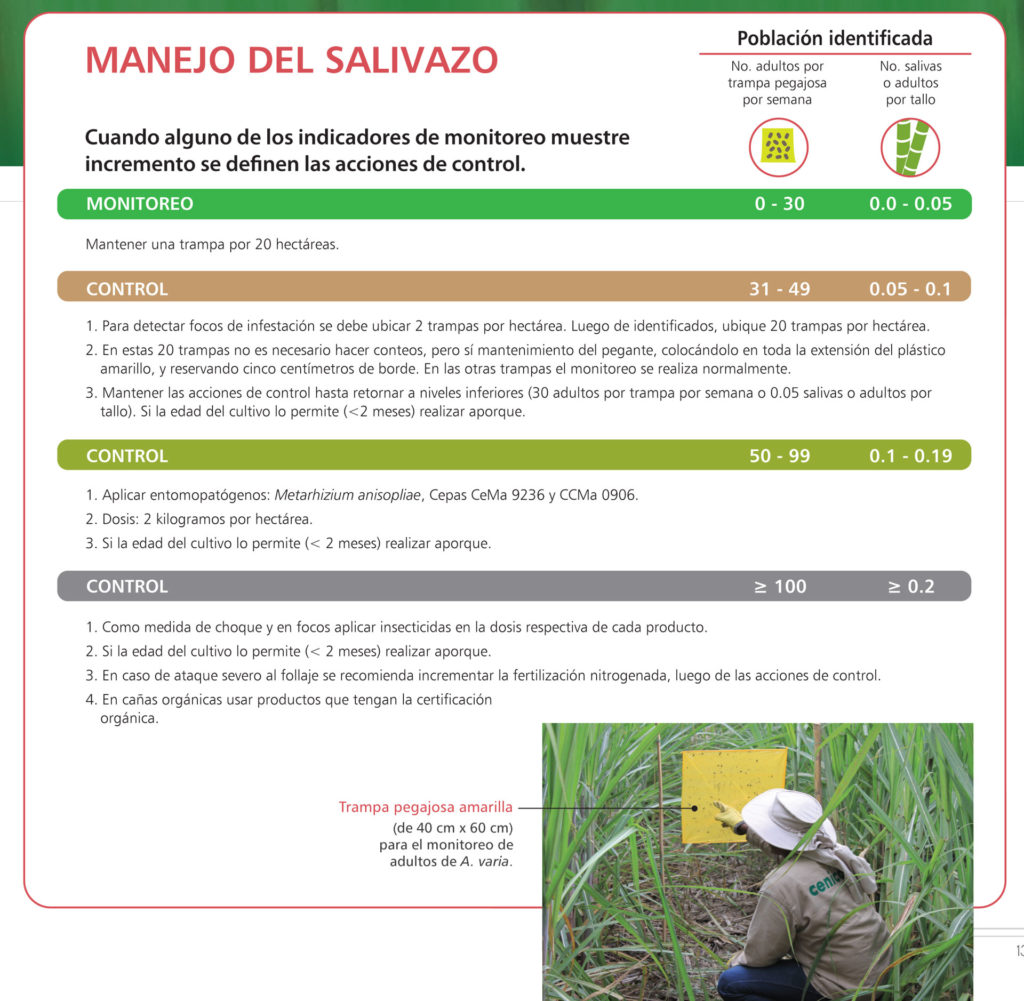From 2007, when the spittle was originally detected Aeneolamia varies Between Buga and Tuluá, it has moved mainly to the north of the Cauca river valley and today there are severe attacks between Palmira and Cartago, especially in the CC 01-1940 variety.
Damage and red flags
- The nymphs of A.varia suck the sap from the roots and the sap from the leaves in the adult stage. Through the leaf the adults inject a toxin into the plant. Necrosis occurs in the affected tissue portion and elongated reddish-brown spots appear until the leaf is completely dry. When spittlebug populations in a lot are high, the appearance of sugarcane is similar to herbicide burn and does not develop as expected.
- The attacks of the pest are occurring mainly in canes less than six months of age and is confirmed when adults are observed on the leaves and foams of different sizes on the ground, around the cane strains.
Economic impact
In Colombia it is estimated that the impact of this insect on sugar cane can be 22% in biomass; but it is possible that with high infestations the impacts are greater.
Pest monitoring and management
Monitoring tasks include observation of crop fields, sighting of foam, capture of adults and counting of nymphs.
1. Detect presence:
At sites where spittlebug is presumed, two yellow sticky traps per hectare should be installed for weekly counting of captured insects. Sticky traps are 3-gauge yellow plastic pieces, cut to a size of 40 x 60 centimeters.
They are located at the edges of the lot, tied with rope, conditioned with glue and separated from the soil surface between 30-50 cm.
Threshold of economic damage: the population level of spittlebug that can cause a reduction in sugarcane production and effects on the profitability of the crop occurs when any of these situations are recorded in the evaluation sites:
- More than 100 adults / trap captured per week.
- More than 0.2 adults / stem observed per strain.
- More than 0.2 foams / stem observed per strain.
2. Estimate the populations:
It is necessary to count the number of individuals of spittlebug in their different stages of development to make management decisions.
3. Make an integrated management:
Cenicaña recommends that crops where the insect exists be carried out an integrated management with emphasis on cultural practices and the preservation of native natural enemies such as the predator Salpingogaster nigra.
Salpingogaster nigra
is an enemy
natural spittlebug,
that is associated with stripes
vegetables and weeds
broadleaf.

TO CONSULT
The following publications can be consulted at www.cenicana.org and at the Cenicaña library for more information on the pest and its management:
Disclosure Series No. 12: Biological control of spittlebug. Aeneolamia varies (F.). (Hemiptera: Cercopidae). Use of the mushroom Metarhikum anisopliae (Metsch.) Sorokin.
Book: Pest Insects and Charities of Sugarcane Cultivation in Colombia.
Quarterly Letter 29 No. 2 - 3: Spittlebug management Aeneolamia varies in sugar cane crops in the Cauca river valley. p. 10 - 17.


Information Letter | JUL 2019: 12-13 PDF version












